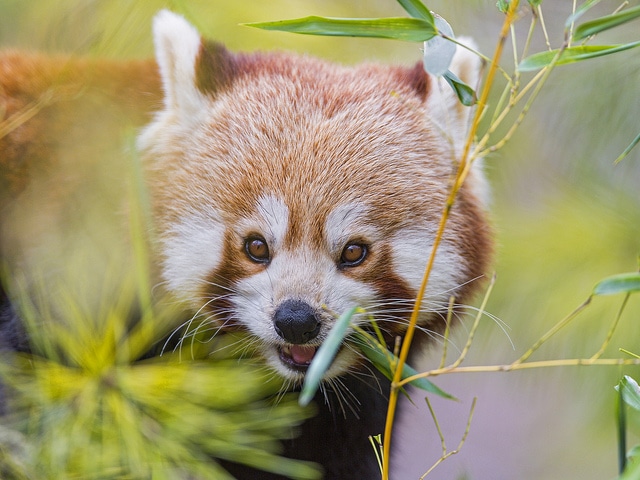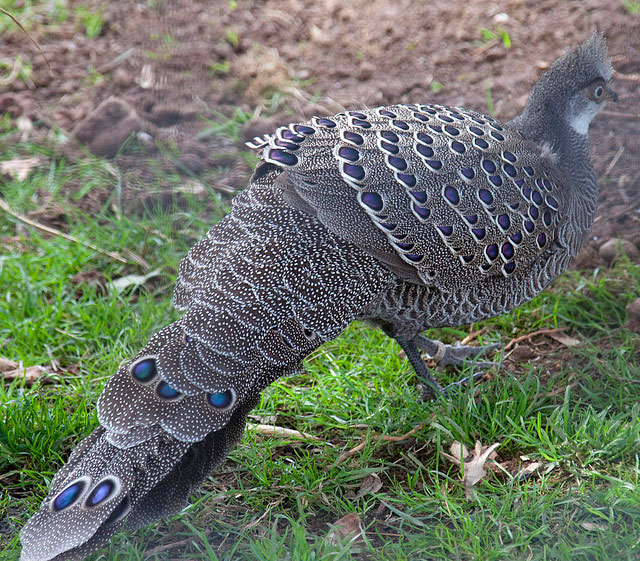The Khangchendzonga National Park or the Kanchenjunga Biosphere Reserve as it was previously known, lies in Sikkim, in the state of West Bengal. The park has been named after the third highest mountain in the world, Kanchenjunga or Khangchendzonga (which means The Abode of the Gods) which forms an impressive background in the park at an imposing 8,586 meters in height. The total area under this park is more than 1784 square kilometers. The park itself is on a high altitude at 1829 meters with as many as 18 glaciers like the Zemu Glacier dotting its landscape. The area of the park starts from the cold deserts of the Lhonak Valley and the Lachen ridges to Yuksom. The west boundary is along the borders of both China and Nepal. The park is a cold wilderness on one of the highest peaks on the planet within a spectacular mountain range. Khangchendzonga is an independent mountain with its own glaciers and glacial system—a unique feature in itself. This national park is home to flora and fauna endemic to the Himalayas.
[Also Checkout: 100 Best Indian National Parks]
The Khangchendzonga Bio Reserve, one of the highest ecosystems in the world, has many ecosystems within itself from sub-tropical to arctic and subtropical and East-Himalayan to Alpine. There are many hot springs, caves and lakes—all sacred to the locals. The state government has in fact banned scaling of the mountain due to religious sentiments. The vegetation too is unique and rare, some unheard of in other parts of the world. There are a few tribal settlements in the park all belonging to the Lepcha Tribe.
Climatic Conditions
Located between27 degrees 42’0”N and 88 degrees 08’0”E, Khangchendzonga sees heavy snowfall for most of the year. Summer months are from April to May as monsoon extends from May all throughout October. Summers are pleasant while winters get colder than 0 degrees C.
Best Time to Visit
The best time to visit Khangchendzonga is between March to May and September to mid-December. Treks are organized by the state and forest departments so according to the climate prevailing at the time of year, you should be prepared in terms of permits and clothing.
Wildlife at Khangchendzonga National Park
Blessed with a unique ecosystem, the park has a lot in store for nature lovers and wildlife enthusiasts alike.
Birds
Among the rare birds to be found here are the Black headed Crane, the Himalayan Monal Pheasant, Grey Peacock Pheasant, Blood Pheasant, Satyr Tragopan, Tibetan Snow Cock and the Himalayan Snow Cock.
Mammals

The Snow Leopard, which is the state animal, The Wild dog, the rare Musk Deer which has been hunted to near extinction for its musk, the Himalayan Tahr or Mountain Goat, Sloth Bears, Goral, Takin, Civet, the Red Panda, endemic to these parts of the world, The Himalayan Black Bear, the Tibetan Wild Ass, the Himalayan Blue Sheep and the Serow.
Reptiles include the Rat Snake and Russell Viper.
Extremely rare flora include the Cordyceps sinensis, a fungus plant of medicinal value that grows on the head of a caterpillar.
Distance from Major Cities
Khangchendzonga is 20 kilometers from Chungtan and 139 kilometers from Darjeeling. Siliguri is 114 kilometers away.
Chennai – 1811 kilometers
Delhi – 1081 kilometers
Mumbai -1825 kilometers
Kolkata – 560 kilometers
Ahmedabad – 1648 kilometers
Bengaluru – 1963 kilometers
Chandigarh – 1159 kilometers
Hyderabad – 1509 kilometers
Indore – 1353 kilometers
Nearest Airport
The nearest airport is Bagdogra Airport, about 222 kilometers away. There is a helicopter service run by the Sikkim Tourist Cooperation that operates daily from Bagdogra and Sikkim.
Nearest Railway Station
The nearest railways station is New Jaipaiguri about 221 kilometers away.
Road Accessibility
The nearest highway is the NH 31A via Sevlok-Gangtok. The trips inside the national park are all undertaken by treks.
Accommodation Facilities
You can stay at the Forest Department’s Rest House at Lachung or at Yumthang. Gangtok has many hotels as it is a bustling tourist place.
Entry Fees
Entry is restricted and regulated. Indian nationals need an Inner-line permit while foreign nationals need a limited permit issued by the Ministry of Home Affairs. The consent of the Chief Wildlife Warden is also mandatory.
For Indian nationals the fee is INR 200 per person for 7 days with an additional INR 30 for each additional day. For foreign nationals INR 400 plus INR 75 for each additional day spent there. Indian students pay INR 40 per day plus INR 20 per additional day.
Useful Contacts for Bookings and Accommodation
The Royal Plaza Gangtok
Upper Svari, Deorali
Ph- 91-3592-280232
Hotel Mayfair
Lower Samdur Block
Ranipool
Gangtok
Ph-91-03592-250555/666/777/888/999
Forest Rest House
Forests, Environment and Wildlife Management Department
Government of Sikkim
Forest Secretariat
Deorali
Gangtok
Ph-03592-281261


